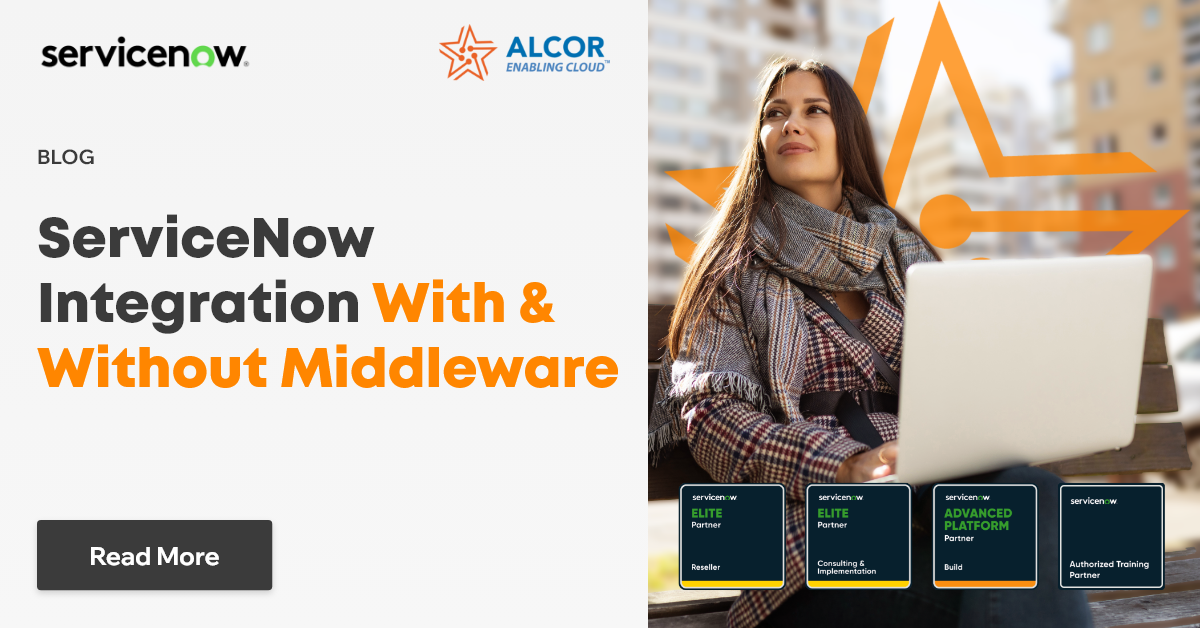
In the dynamic realm of enterprise IT service management, ServiceNow has emerged as a powerful platform for streamlining workflows and enhancing collaboration. As organizations strive for a connected and efficient ecosystem, integrating ServiceNow with third-party applications becomes crucial. In this blog, we’ll explore the intricacies of ServiceNow integration, comparing approaches with and without middleware.
ServiceNow serves as the nerve center for many organizations, orchestrating Service Delivery, automating processes, and fostering communication. Integration with third-party applications augments its capabilities, but the way this integration is achieved can significantly impact overall efficiency. Let’s delve deeper into this by exploring the challenges and benefits of integrating ServiceNow with third-party applications, examining both direct integration and middleware strategies.
While integrating ServiceNow with third-party applications is essential for enhancing its capabilities, doing so without middleware presents its own set of challenges.
Fortunately, there’s a more streamlined approach to ServiceNow integration: leveraging middleware solutions. Middleware acts as a game-changer, simplifying the integration process and offering a host of benefits such as:
To illustrate the real-world impact of middleware integration, let’s consider a hypothetical scenario where a global enterprise integrates its ServiceNow instance with a suite of HR applications using middleware. The middleware layer seamlessly synchronizes employee data, service requests, and workflow statuses between ServiceNow and the HR applications, ensuring real-time visibility and streamlined operations across the organization.
| Factors | Direct Integration | Middleware Integration |
|---|---|---|
| System Complexity | Ideal for simple, uniform structures. | Suited for complex environments with diverse systems. |
| Scalability Requirements | May face challenges with scalability. | Offers scalability features like load balancing. |
| Flexibility and Adaptability | Less flexible; requires modifications for changes. | Provides flexibility; facilitates the addition of new systems. |
| Real-time Communication Needs | Preferred for low latency and real-time communication. | May introduce latency; less suitable for real-time scenarios. |
| Interoperability | May struggle with different protocols and formats. | Enhances interoperability between systems with varying protocols. |
| Cost Considerations | Potentially less costly with fewer components. | Additional costs for licenses, infrastructure, etc. |
| Tight vs. Loose Coupling | May result in tight coupling; challenging for upgrades. | Promotes loose coupling; fosters independence between systems. |
| Development Time | Faster implementation for simpler scenarios. | Requires more time for setup, configuration, and testing. |
| Existing Infrastructure | Effective when systems share compatible architectures. | Beneficial with legacy systems or a mix of technologies. |
| Security Requirements | Security considerations depend on the implementation. | Middleware layer can enhance security features. |
In conclusion, the choice between direct integration and middleware integration depends on various factors such as system complexity, scalability requirements, flexibility needs, and security considerations. While direct integration may be suitable for simpler scenarios with uniform structures and tight budgets, middleware integration offers a robust solution for complex environments with diverse systems and evolving requirements. By carefully weighing these factors and leveraging appropriate integration strategies, organizations can maximize efficiency, agility, and innovation in their ServiceNow integrations.
 Back to Blog
Back to Blog